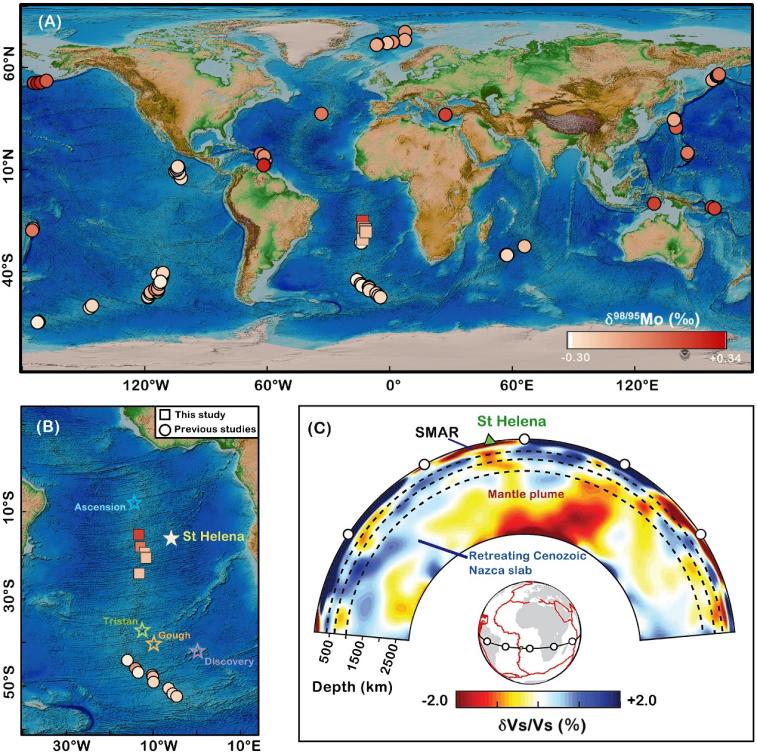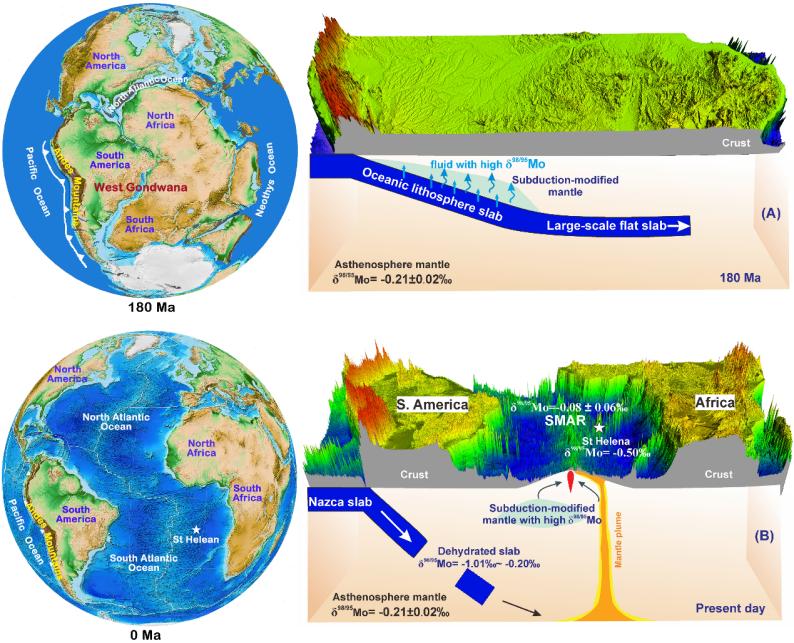Mid-ocean ridge basalts (MORBS), far from subduction zones, are generally thought to be unaffected by subduction processes. However, some MORBs exhibit arc-like geochemical signatures—such as negative Nb anomalies and elevated H₂O/Ce and Ba/Th ratios—known as "ghost-arc signature".
Their origins are still controversial, and the involvement of mantle plume material, recycled sediments, ancient cratonic mantle, and subducted altered mantle makes it more complex to pinpoint their source using conventional radiogenic isotopes.
Recently, Dr. CHEN Zuxing and ZHANG Yuxiang of Prof. ZENG Zhigang's team from the Institute of Oceanology of the Chinese Academy of Sciences (IOCAS), together with their collaborators, revealed that molybdenum (Mo) isotopes provide new insights into the origin of ghost-arc signatures in MORBs.
The study was published in Earth and Planetary Science Letters on Mar. 10.
The researchers analyzed Mo isotopes in fresh basalts from the South Atlantic mid-ocean ridge (15–24°S) and identified heavy Mo signatures resembling those in arc basalts influenced by subduction fluids, along with low (La/Sm)N, Nb/Zr, and Ce/Pb ratios, and non-enriched Sr-Nd isotopes. These features cannot be explained by interactions with recycled sediments, lithospheric mantle, or the St. Helena plume.
Integrating seismic tomography and plate reconstructions, the researchers link these geochemical signatures to subduction-modified mantle beneath the southwestern margin of Gondwana during the Mesozoic. This component was transported towards the upper mantle beneath Gondwana by supersized flat subduction and ultimately served as the source of the studied MORBs.
"This study not only provides key evidence for the role of ancient subduction-modified mantle in shaping the heterogeneity of current MORB mantle, but also offers a new perspective on the origin of ghost-arc signatures in global MORBs," said Dr. CHEN, first author of the study.

Fig. 1 Global Mo isotopic compositions of mid-ocean ridge and arc basalts, and seismic tomography of the deep structure beneath the St. Helena plume–South Atlantic ridge system. (Image by IOCAS)

Fig. 2 Conceptual model for the origin of arc-like heavy Mo isotope signals in South Atlantic MORBs. (Image by IOCAS)
Chen, Z., Teng, F.-Z., Stern, R. J., Zhang, Y., Li, J., and Zeng, Z. (2025). Molybdenum isotope evidence for subduction-modified mantle beneath mid-ocean ridges, Earth and Planetary Science Letters.
(Text by Dr. CHEN Zuxing)
Media Contact:
ZHANG Yiyi
Institute of Oceanology
E-mail: zhangyiyi@qdio.ac.cn
(Editor: ZHANG Yiyi)

